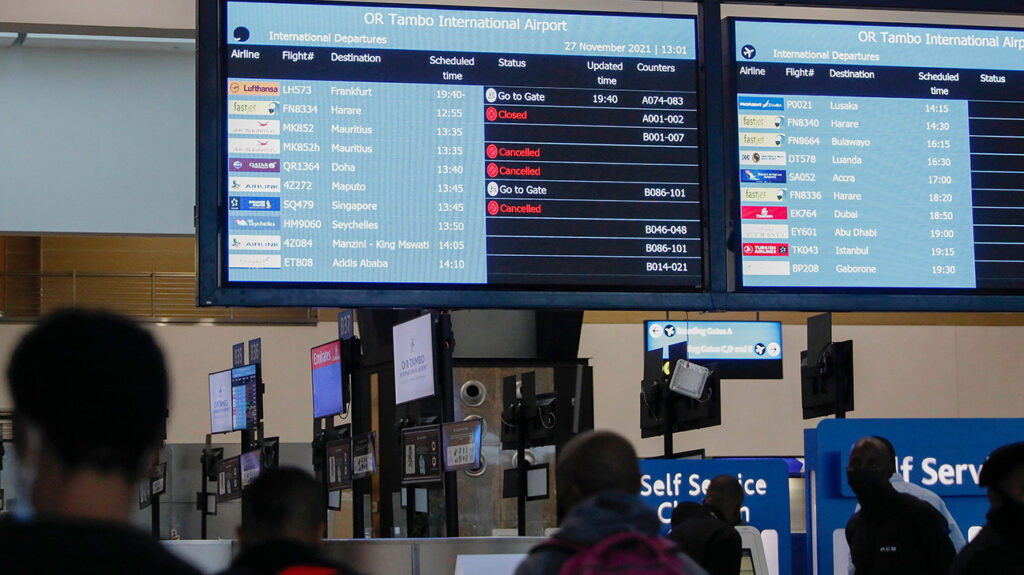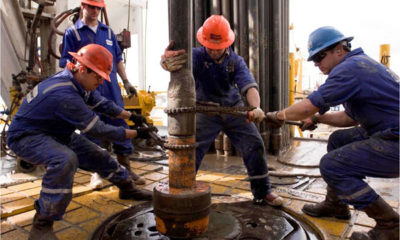You would be hard pushed to find a reason not to be in a jubilant mood as an investor as financial markets dished out the happy new year’s overnight, the first trading day of the year. I spent it on a series of almost empty flights on the trek to managed isolation in New Zealand, but for the rest of the world, the New York session finished with plenty of New Year’s goodies. Stocks finished higher, oil moved higher, the US Dollar moved higher, and US treasury yields moved higher. All signs that the US economy is starting the year in continuing recovery mode.
The chief reason behind the return of investor confidence is omicron, a trend really occurring since Christmas and the incessant “Jeff, will we get a Santa Claus rally?” As more data pours in, it seems that yes, the virus variant is much more contagious, but it is not leading to a proportionally larger number of hospital admissions, the opposite in fact. Quid pro quo, it won’t’ stop the global economic recovery, although China will remain locked up with Hong Kong and New Zealand, therefore “buy everything.”
Tesla jumped 13.0% overnight as it delivered more cars than forecast in Q4. The cost of replacing batteries remain its dirty little secret, and is highly ironic in some ways, as a four-wheeled tree hugger that has fewer moving parts than a normally aspirated petrol burner. Google “Finn,” “explosives'”, “battery,” and “Tesla” for one man’s adventure with an “ancient” 2013 Tesla. Apple also briefly touched a $3 trillion market cap yesterday, mostly because it’s Apple and its cool, but also because the street wanted to see a 3-handle.
One warning sign around equity exuberance though is the US bond market, with US 10-year yields climbing around 13 basis points to 1.635%, its highest, I believe, since late October. With a return of the post-Omicron buy everything trade, will come to the hard realisation that globally, inflation continues and yields globally, have likely seen the bottom. Monetary policy normalisation will be the name of the game for central banks, although it will look more normal in some countries than in others. The US, Russia, Latin America, and the Commonwealth countries will show normalisation to greater and larger extents. Japan and the Eurozone will change the names on the doors but keep monetising their government’s debt the same as ever behind it, while much of Asia, will tolerate stagflation to support growth making them mostly “bold and hold.”
Although the omicron relief trade could continue dominating investor sentiment for much of January, the new budget year always needs a “throw the kitchen sink at it” to get started, the US bond market is telling us not to get too carried away. Bitter experience also tells me that the first big direction trade of the year is usually wrong. Stock markets, in particular, will have to work much harder to make an honest dollar in 2022, as monetary policy settings get moved back from fantasy to reality.
Asian markets though are showing omicron resilience, with China and pan-Asian Manufacturing PMIs over the last couple of days, mostly outperforming for December. Today’s China Caixin Manufacturing PMI rose to 50.9, while Japan’s Jibun Bank PMI reading held steady at 54.3. Yesterday, Singapore GDP also proved resilient, with 2021 GDP finishing 7.20% for the year, completely reversing with interest, the 5.40% contraction of 2020. That, interestingly, is a trend that has been repeated all over the world, it just doesn’t feel like it in our everyday life.
Germany’s Unemployment and Retail Sales kick off Europe’s week, along with French Inflation. The US releases the JOLTS Job Openings and USD ISM Manufacturing PMI. Omicron headlines will likely have a diminishing impact now that the new year has started and with the data seemingly clear about its virulence. If today’s data from Germany and the US show employment and job vacancies holding firm versus omicron, investors should the year in an ebullient mood as omicron becomes omigone
Asia’s cautious equity mood continues.
With most of the region back at work today, Asian markets have refused to blindly piggyback New York’s overnight rally higher, even as the omicron relief rally gathers steam. The Indonesia coal export ban, and the suspension of Evergrande shares yesterday left plenty of two-way risk on the table for Asia, especially where China is concerned. Overnight, Wall Street powered higher, led by Tesla and Apple. The S&P 500 rose by 0.53%, the Nasdaq rallied by 1.03%, and the Dow Jones climbed by 0.68%. Futures remain unchanged on all three indexes in Asian trading.
Wall Street’s performance has green-lighted gains in Japan today, but Asia is still displaying a mixed performance. The Nikkei 225 is 1.35%, higher even as the Kospi falls by 0.45%. Property and energy nerves are sweeping Chinese markets, as well as a partial virus shut-down of the city of Zhengzhou, booster requirements in Hong Kong and tighter information security requirements for companies wishing to IPO overseas. With that number of headwinds, it is not surprising that China is in the red. The Shanghai Composite is 0.65% lower, the CSI 300 is 1.20% lower, and Hong Kong is down 0.25%.
Singapore has jumped 1,0% higher after impressive GDP data yesterday, with Taiwan also performing well, climbing 0.90%. Jakarta has risen by 0.65%, but Kuala Lumpur has fallen by -.70%, with Manila down 1.10%, while Bangkok has climbed 1.10%, Australian markets have jumped on the Wall Street rally, helped by low hospitalisation rates as omicron sweeps the country. The All Ordinaries are 0.77% higher, with the ASX 200 rising by 0.87%.
With an underlying omicron is omigone theme pervading, today should see a positive start to European trading.
US Dollar rises sharply on higher yields.
The US dollar rallied sharply against the major currencies overnight as US 10-year bond yields surged back above 1.60%. The dollar index of major currencies rose sharply by 0.58% to 96.22 overnight, more than offsetting the previous days falls and leaving major technical support at 95.50 intact once again.
EUR/USD has fallen 0.70% to 1.1300 and has traced out a number of failures ahead of 1.1400 resistance. Failure of support at 1.1270 heralds a retest of 1.1200. GBP/USD has fallen 0.40% to 1.3470, with resistance at 2.3550, last week’s high and the 100-day moving average (DMA). Failure of support at 1.3400 signals the next leg lower. The widening US/Japan rate differential has pushed USD/JPY 40 points higher to 115.75 today, Asia’s biggest FX mover. Assuming that US yields remain elevated, there is nothing on the charts to stop a rally to 118.00 in the coming weeks.
The US Dollar rally stopped the AUD/NZD and CAD rallies in their track, marking an abrupt end to their holiday season rallies. Although equities rallied on diminishing omicron fears, that same situation has allowed US yields to rise sharply, lifting the US Dollar. The US Dollar rally could peter out if sentiment remains strong, but the moves in equities and currencies highlight what a messy year could be ahead, without the unifying theme of the post-vaccine recovery central bank back-stop in play. In the meantime, AUD/USD has fallen to 0.7200 overnight and is in danger of retesting 0.7100. NZD/USD has fallen to 0.67800 and could revisit 0.6700 initially, and USD/CAD moving higher to 1.2800.
With USD/CNY anchored around 6.3700, and China content with monetary settings for now, including daily liquidity via the repo, Asian currencies have remained anchored as well. However, some cracks are starting to appear, with USD/KRW rising to 1194.50 today and USD/MYR jumping higher to 4.1800. If US yields continue to move higher this week, Asian FX weakness could become more widespread, with INR, PHP, and IDR the most vulnerable to widening yield differential perceptions.
Oil moves to the top of its range.
Oil prices edged higher overnight, Brent crude rising 1.25% to $78.90, and WTI climbing 0.85% to $75.95 barrel. Diminishing omicron concerns have supported oil through the holiday period and the spectre of OPEC+ now looms over energy markets. The OPEC+ monthly meeting has rolled around quickly this time, probably because they left the last one open in December as omicron hit, to support prices. The JMMC and full grouping meet this week with the OPEC+ still-open meeting oil floor having done its job without costing a cent. I do not expect any changes or surprises from OPEC+ this week, but its mere threat should keep a floor under prices this week.
Oil has risen again in Asia, helped along by Indonesia banning coal exports over the weekend, having exported so much this year that their own stocks in Java for power generation are now dangerously low. The ban will impact China the most initially, but given their inventory building, should not cause too much of a stir. In the meantime, it has been enough to life oil prices in Asia by around 0.50% to $79.35 for Brent, and $7.35 a barrel on WTI.
Brent crude has support at $77.60 and $77.50 barrel, its 100-day moving average (DMA), followed by 77.30. It has resistance at $80.00, and $82.00 a barrel. WTI has support at $75.00 and then $74.60, it’s 100-DMA. It has resistance at $77.50 a barrel, and then $79.30.
Gold’s Christmas rally ends abruptly.
Gold showed, once again, how frail bullish sentiment is as recent long positions were stopped out overnight, gold falling 1.50%, or $28.50 an ounce, intraday to close at $1801.50 an ounce. Some short-covering has seen it creep up to 1804.00 an ounce in Asia.
Gold’s attempts to stage a meaningful recovery remain unconvincing, with traders cutting long positions at the very first sign of trouble intra-day. This time it was the US bond market, with yields rising sharply and sending gold into an equally vicious tail-spin, unwinding its entire Christmas rally. This is not the first time we have seen this sort of price action in the last month, with golds most consistent pricing factor being its ability to disappoint bullish investors.
Gold has resistance at $1830.00 and $1840.00 an ounce, although it would be a huge surprise if we saw those levels this week. Support lies at $1790.00, followed by $1780.00 an ounce. $1790.00 to $1820.00 is my call for the range this week.

















